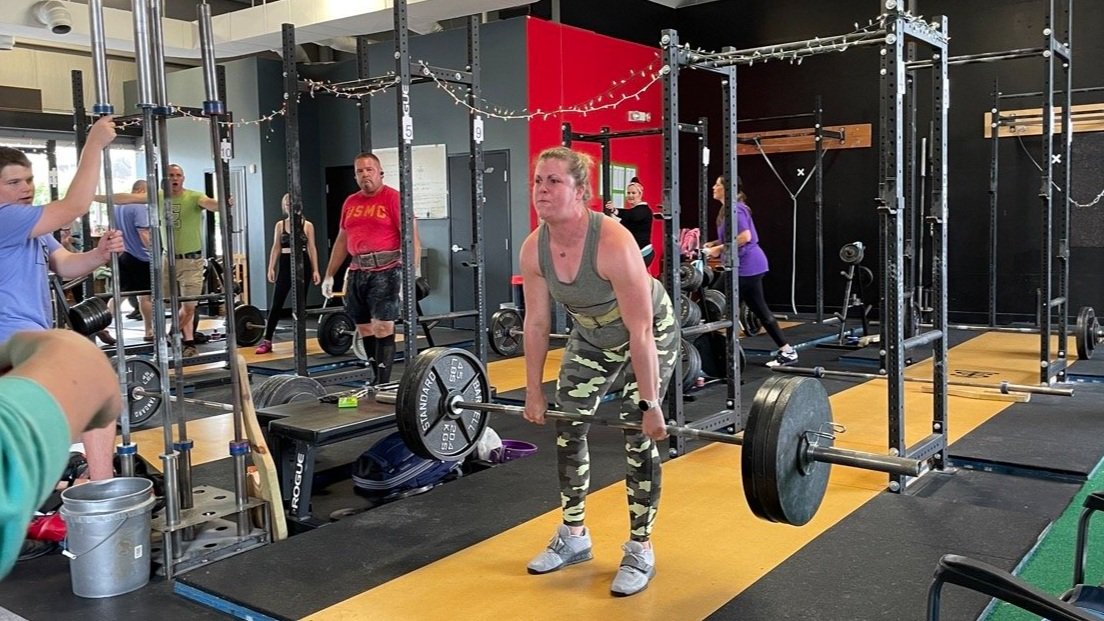THIS is Destroying Your Deadlift
/You’ve got deadlift problems. Perhaps your deadlift swings away from you when you break the barbell off the ground. Maybe you spend too much time between reps with the bar sitting on the floor. It may be that you find yourself moving your butt up and down in the neverending quest to find that just right position for your hips before you start the pull. The possibilities are endless.
Hey. Relax. It’s not you. It’s the floor.
No, I don’t mean you need a more robust lifting platform, or that there’s actually something wrong with your floor. I mean that the deadlift rests on the floor between reps - which makes it different from the squat, the press, or the bench press - and it’s this seemingly insignificant detail that might be causing you to ruin your deadlift.
Because the bar sits on the floor between reps, it permits you to perform all sorts of ridiculous antics while it’s down there. You rock forward, you lean on the bar, you rock back, you take three thousand breaths before setting your back for the next rep - the list of potential shenanigans goes on. In short, you perform all sorts of unnecessary tomfoolery, and this is extremely detrimental to your deadlift.
You’ve never even dreamed of doing this sort of nonsense in the squat. Because you are supporting the bar all of the time in the squat, you are highly motivated to be efficient between reps. Of course you stay balanced over your midfoot between reps - holding several hundred pounds on your back while balanced on the balls of your feet seems rather silly, so you never do it. You also spend relatively little time between reps - enough time to take a breath or two and get tight again - because you want to get the set over with and get that heavy bar off your back sometime today.
When you do silly things between reps of your deadlift - and this sort of thing happens all the time - you cause several problems. First - and this is the big one - all this unnecessary movement greatly reduces your chances of getting in the correct position for the next pull. Second, you exhaust yourself. The bottom of the deadlift is the only resting position for a deadlift work set, but it’s a lousy resting position, and you already know this. You’re crouched over, so your back and legs get tired down there, and it’s not much fun breathing in that position for very long. Third, you make your work set take much longer than it should. Get the set done, already.
How can you fix this problem? Keep it simple and be religious about your 5-step setup.
The 5-step setup applies for the first rep, of course, but it is especially important for all subsequent reps. Here’s a quick recap (watch the included video for a better and more complete understanding), but it’s steps 3-5 that we’re going to focus on in the next section:
5-Step Deadlift Setup
Stance: Shins 1” inch from the bar. Narrow stance with toes slightly turned out.
Grip: Bend at the hips to grab the bar while keeping your shins as vertical as possible - do NOT touch the bar with your legs yet. (also, never push down on the bar, i.e., don’t rest with your own weight on the bar)
Shins: Bend your knees (i.e., drop your butt slightly) until your shins lightly touch the bar.
Chest: Squeeze your chest up to set your back.
Pull: Drag the bar up your legs.
We use the 5-step setup for every rep, but for every rep after the first one, steps 1 and 2 are already completed. They’re already completed because you’re going to set the bar down right over the middle of your foot (“stance”), and you’re not going to let go of the bar (“grip”). If you set the bar down a little out of position, that’s not a problem - simply roll the bar to the correct spot over the middle of your foot. Keep your shins OFF the bar while doing this, make sure that you are balancing on your midfoot (not the balls of your feet), and don’t push down on the bar (if anything, keep a little upward tension on the bar).
Is this fool setting up for his 1st rep . . . or has he just finished his 1st rep? you’ll never know, and that’s the way we like it.
Think of it this way: Set the bar down so that it looks like you’ve just completed steps 1 and 2 of your very first rep. If Lawrence takes a picture of you at this moment, he shouldn’t be able to tell if you’re about to do your first rep or if you’ve set the bar down after a rep.
If you do this, then the rest of the setup for that next rep is simple. It’s steps 3-5: shins lightly to the bar, squeeze the chest up, and pull.
Keep it simple, and keep it repeatable.
As always, we hope this helps you get stronger and live better.
-Phil
PS: Whenever you want even more Testify in your life, here are some free resources:
Book a free intro and strategy session with us HERE.
Pick up a free copy of Testify’s Squat Guide: 12 Tips to Improve Your Squat Now HERE.
Get our free weekly email - containing useful videos, articles, and training tips - HERE.
Follow Testify on Instagram HERE.
Subscribe to Testify’s YouTube channel HERE.
(Some links may be affiliate links. As an Amazon Associate, Testify earns from qualifying purchases.)













